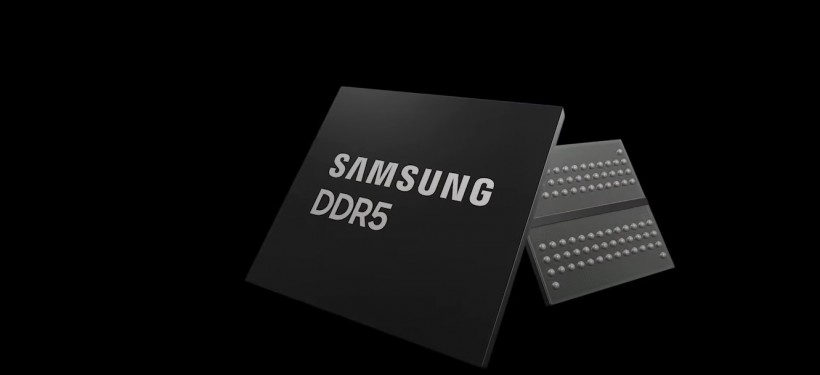On Thursday, Mar. 25, Samsung announced it is now developing a high-speed memory module called the DDR5. According to the South Korean company, it was the first DRAM that it created to pave the way for advanced computing.
HKMG or the High-K Metal Gate process technology could reach a data transfer speed of 7,200Mbps. Moreover, it is now quicker than the usual DDR4, where its speed is twice as fast than the older memory.
Samsung Zooms Towards Advanced Computing Through DDR5

According to a report by Samsung Newsroom, its first DDR5 memory relies on the latest technology useful in the supercomputing process. It is said that it has 512 GB of space, and it is a full capability to suit the systems like artificial intelligence (AI), advanced computing, data analytics, as well as machine learning.
For Samsung Electronics' Vice President of the DRAM Memory Planning and Enabling Group, Young-Soo Sohn, Samsung has managed to become the only company that specializes in producing an impressive semiconductor that was integrated with the HKMG technology.
The cutting-edge logic process has transitioned into a product development that focuses on developing memory. Sohn continued that through the DRAM creation, Samsung can only give its customers a high quality of service, but also a more efficient solution at the same time.
The memory will help the computers that require super-fast and high-tech technological adoption like in the case of those that are used for autonomous driving, medical research, finance, and other field or areas.
For Intel's General Manager of Memory and IO Technology, Carolyn Duran, the adoption of DDR5 is beneficial when dealing with huge amounts of data that needs to be saved, transferred, and utilized. The DDR5 transition emphasizes the need for the data centers and networks to be more equipped with this technology.
Furthermore, Intel's Vice President added that the engineering team behind the company has already decided to collaborate with Samsung so they can use their pending Xeon Scalable processors. The Santa Clara-quartered company gave a codename "Sapphire Rapids" to the upcoming processors.
Read Also: Buying Nvidia RTX 3080? Here's Why You Should Not Buy Yet
Why HKMG Technology is a Game-Changer to Semiconductors?
In a report by ZDNet, Samsung chose HKMG technology primarily to replace the older silicon oxynitride when it comes to insulation. The tech giant said that its first DDR5 was said to have less leakage of current. Since the layer provided by silicon is thinner, Samsung thought of a better solution to improve this.
Not only the current leak was solved here, but also DDR5 surpassed the expectations of the company through its impeccable performance. HKMG now uses 13% less power, and this makes it more compatible with the data centers' usage.
In 2018, Samsung started using HKMG technology in its GDDR6 memory. That was the first time that the company used it for its portfolio in-memory technology. It seems that the company is headed to explore the full capability of DDR5, so it can achieve the best DRAM technology among other companies.
Also, Samsung's DDR5 depends on the through-silicon via (TSV) technology. The 16GB space for DRAM chips was also included in the DDR5's layers. The first time that the company made use of TSV was in 2014, where Samsung's memory capacity can only reach up to 256GB.
Related Article: Apple, Samsung May Be Forced to Fix Broken Smartphones for Free or Cheaper Prices, Thanks to this Law
This article is owned by Tech Times.
Written by Joen Coronel









